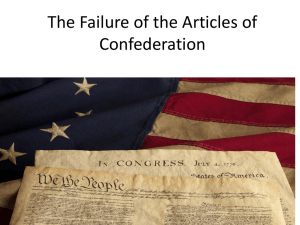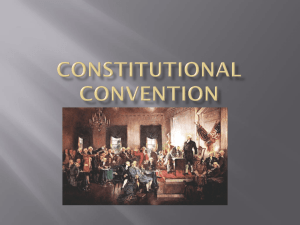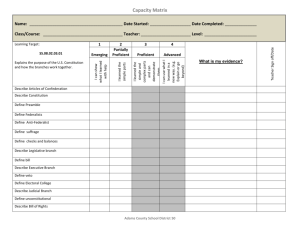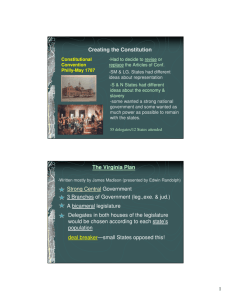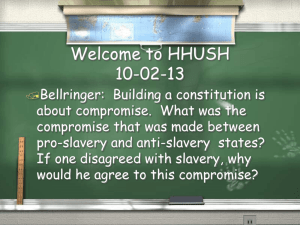Chpt8 Study Guide
advertisement
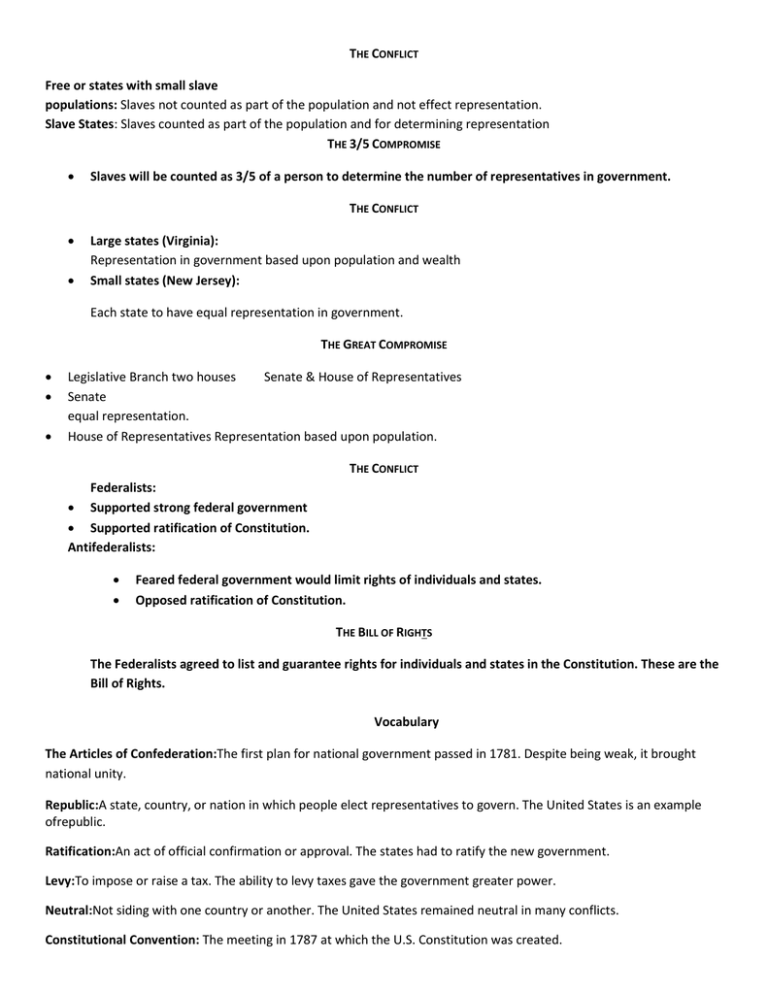
THE CONFLICT Free or states with small slave populations: Slaves not counted as part of the population and not effect representation. Slave States: Slaves counted as part of the population and for determining representation THE 3/5 COMPROMISE Slaves will be counted as 3/5 of a person to determine the number of representatives in government. THE CONFLICT Large states (Virginia): Representation in government based upon population and wealth Small states (New Jersey): Each state to have equal representation in government. THE GREAT COMPROMISE Legislative Branch two houses Senate & House of Representatives Senate equal representation. House of Representatives Representation based upon population. THE CONFLICT Federalists: Supported strong federal government Supported ratification of Constitution. Antifederalists: Feared federal government would limit rights of individuals and states. Opposed ratification of Constitution. THE BILL OF RIGHTS The Federalists agreed to list and guarantee rights for individuals and states in the Constitution. These are the Bill of Rights. Vocabulary The Articles of Confederation:The first plan for national government passed in 1781. Despite being weak, it brought national unity. Republic:A state, country, or nation in which people elect representatives to govern. The United States is an example ofrepublic. Ratification:An act of official confirmation or approval. The states had to ratify the new government. Levy:To impose or raise a tax. The ability to levy taxes gave the government greater power. Neutral:Not siding with one country or another. The United States remained neutral in many conflicts. Constitutional Convention: The meeting in 1787 at which the U.S. Constitution was created. Virginia Plan:A proposal for a two-house legislature with representation according to each state’s population or wealth. The Virginia Plan was supported by large states. New Jersey Plan:A proposal for a legislature in which each state would have one vote. The New Jersey Plan was supported by smaller states. Great Compromise: An agreement to establish a two-house national legislature, with all states having equal representation in one house and each state having representation based on its population in the other house. Three-Fifths Compromise: An agreement that three-fifths of a state’s slave population would be counted for representation and taxation. Southestates wanted all slaves to be counted, but Northern states argued that slaves were not citizens. Executive Branch:Branch of government that enforces laws. In the United States, this department is headed by the President. Judicial Branch:Branch of government that interprets laws. In the United States, the Supreme Court is the highest federal court. Legislative Branch: Branch of government that creates laws. In the United States, the legislative branch is made up of the House of Representatives and the Senate. Together, they are referred to as Congress. Checks and Balances: The ability of each branch of government to exercise checks, or controls, over the other branches to balance power between the branches. Antifederalists:People who opposed ratification of the Constitution because they feared the new government would be too powerful. Federalism System of government in which power is shared between the national (federal) government and the states. Federalists People who supported ratification of the Constitution because they believed in a strong central government. Bill of Rights First ten amendments of the Constitution guaranteeing specific individual rights of the people. These were added in order to ratify the Constitution. Amendment Addition to a document. In the United States, the Constitution can be amended through approval of ¾ of the states. Parliament Britain’s chief lawmaking body and model for the United States Congress.

